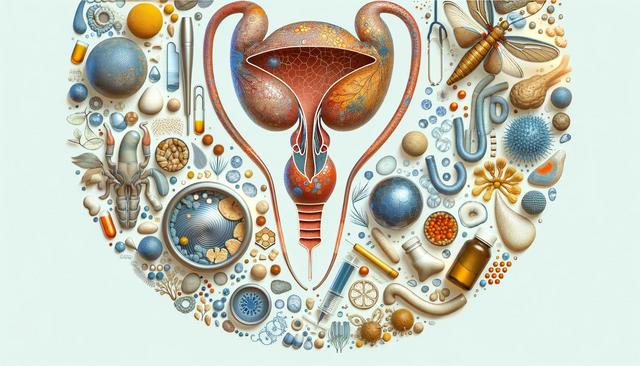A Guide to Early Signs of Bladder Cancer That Are Easy to Miss
Read more About Bladder cancer may develop with symptoms so subtle they’re easy to overlook. Common signs include blood in the urine, frequent urination, or pain during urination. Early detection plays a key role in treatment outcomes. Learn which signs to watch for and when to speak with a healthcare professional.

Understanding the Nature of Bladder Cancer
Bladder cancer originates in the tissues of the bladder, the organ responsible for storing urine. It typically begins in the urothelial cells lining the inside of the bladder and can vary in severity. While it may affect individuals of any age, it is more common in older adults, particularly those with a history of smoking or exposure to industrial chemicals. As with many forms of cancer, early detection significantly improves the likelihood of effective treatment, yet the early signs can often be subtle or mistaken for other less serious conditions.
Because the bladder is part of the urinary system, many early symptoms are related to changes in urination. Recognizing these signs early is critical. However, due to their vague nature, they can be easily overlooked or attributed to other causes such as urinary tract infections or aging. This makes awareness and regular medical checkups especially important for those at higher risk.
Recognizing the Early Warning Signs
One of the most common early signs of bladder cancer is hematuria, or blood in the urine. This may appear as bright red or cola-colored urine, or may only be detectable under a microscope. While this symptom often prompts medical attention, other signs are more easily dismissed.
Other symptoms to watch for include:
- Frequent urination, especially at night
- Urgency to urinate even when the bladder is not full
- A burning sensation or pain during urination
- Difficulty urinating or a weak urine stream
It’s important to note that these symptoms can be caused by various non-cancerous conditions. However, if they persist or recur, it is advisable to consult a healthcare provider for further evaluation, especially for individuals with known risk factors.
Risk Factors and Who Should Be Concerned
Understanding who is more likely to develop bladder cancer can help guide decisions around screening and early detection. Certain lifestyle choices, environmental exposures, and genetic factors can increase risk. For example:
- Smoking tobacco is one of the leading risk factors
- Exposure to industrial chemicals used in dye, rubber, and leather industries
- A history of chronic bladder inflammation or infections
- Age, with most diagnoses occurring after age 55
- Gender, with males being more commonly affected
Individuals with a family history of bladder cancer or those who have undergone chemotherapy or radiation therapy targeting the pelvis may also be at elevated risk. Being aware of these risk factors can guide individuals in making informed choices and seeking timely medical advice.
Diagnostic Steps and When to Seek Help
If early signs of bladder cancer are detected, the next step is to undergo proper diagnostic testing. This may begin with a urine test to detect blood or abnormal cells, followed by imaging procedures such as ultrasound, CT scan, or MRI. A more definitive method involves a cystoscopy, where a thin tube with a camera is inserted into the bladder to allow direct visualization and, if necessary, tissue sampling.
Anyone experiencing persistent or unexplained urinary symptoms should seek medical attention. Healthcare professionals can help determine whether further testing is needed and guide the patient through the diagnostic process. Early intervention not only improves treatment outcomes but may also lead to less invasive treatment options if cancer is caught in its initial stages.
What to Expect After a Diagnosis
A bladder cancer diagnosis can be overwhelming, but many treatment options are available depending on the stage and grade of the tumor. Common treatments include surgical removal of the tumor, intravesical therapy (medication delivered directly into the bladder), and systemic treatments like chemotherapy or immunotherapy. In some cases, radiation therapy may also be used.
Patients are usually monitored closely after treatment to check for recurrence, which is relatively common with bladder cancer. Regular follow-ups involving cystoscopy and imaging tests are standard protocol. Lifestyle changes, such as quitting smoking and maintaining a healthy diet, may also support recovery and reduce the risk of recurrence.
Support from healthcare providers, family, and support groups can make a significant difference in coping with the condition. Open communication with doctors and staying informed about new treatment developments can empower patients to actively participate in their care plan.
Conclusion: Staying Informed and Proactive
Bladder cancer can begin with symptoms so mild they may not raise alarms initially. Recognizing the early signs, especially changes in urinary habits or the presence of blood in the urine, is essential for timely diagnosis and treatment. Those with known risk factors should be particularly attentive and proactive in seeking medical advice when symptoms arise.
By understanding the potential warning signs and maintaining regular checkups, individuals can take informed steps toward early detection. This proactive approach not only improves the chances of successful treatment but also supports long-term health and well-being.